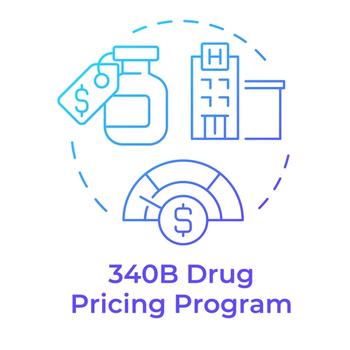
ICER to Shine a Light on Clinical Trial Diversity
Foluso Agboola discusses the framework that the Institute for Clinical and Economic Review has developed for assessing whether clinical trial populations represent the real-world patient population.
With the goal of creating transparency around diversity in clinical research, the Institute for Clinical and Economic Review (ICER) has developed a framework to assess diversity in drug trials. ICER’s new framework tries to create a uniform way to think about diversity in clinical research, ICER’s vice president of research Foluso Agboola said in an interview.
“There has been a lot of articles about the lack of clinical trial diversity but when we looked at it, we realized there was a lack of uniformity about what diversity means and a lack of benchmarks to assess that,” she said.
ICER officials did a review of 110 publications to see how diversity was defined within clinical trials. In this review, ICER found that about 85% defined a benchmark for evaluation, but less than half (48%) used disease prevalence as the benchmark. Only 64% of studies defined what would be considered adequate representation.
“We found that a lot of clinical trials don’t consistently report the race and ethnicity of trial participants,” Agboola said.
A lack of diversity in trials has consequences for health outcomes, finds a
Agboola and her team at ICER developed the framework to consider the disease prevalence based on race and ethnicity, sex, and age. They plan to evaluate whether a clinical trial’s patient population mirrors the disease population.
She said age is also an important factor in representation in patient populations. “There is a missed opportunity when we focus only on thinking about diversity with regard to minorities or women,” she said. “We wanted to think about it more holistically.”
Agboola stressed this framework was not designed to assess generalizability of clinical trial results or how a drug works in a specific patient population. The framework was designed to assess and to talk about representation within the clinical trial and how that compares with the broader disease population.
Trials will be graded on Good, Fair and Poor scale for race and ethnicity, sex, and age. A score of 3 means the trial enrollment matches the real-world patient population. A score of 0 means the trial doesn’t record the patient groups that were studied.
ICER plans to include the rating for diversity in its clinical evaluations, starting with its assessment of ensifentrine to treat patients with chronic obstructive pulmonary disease (COPD). ICER’s draft evidence report will be available on April 10, 2024.
Developed by Verona Pharma, ensifentrine is a first-in-class compound that combines a bronchodilator and a non-steroidal anti-inflammatory that would be delivered through a nebulizer. It is currently under FDA review with a Prescription Drug User Fee Date of June 26, 2024, as a maintenance treatment for patients with COPD.
“We see this framework as an opportunity for transparency around clinical trial diversity,” Agboola said. “But there’s also the opportunity to be able to recognize the investment of manufacturers that have done a good job on clinical trials diversity.”
Newsletter
Get the latest industry news, event updates, and more from Managed healthcare Executive.




















































